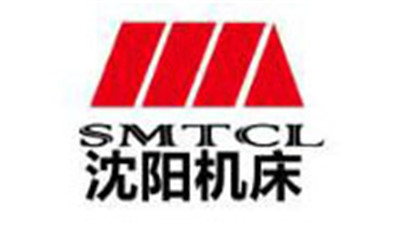5 Essential Tips for Maximizing Efficiency in Your 1000 KVA Transformer Operations
Table of Contents
- Understanding the Basics of 1000 KVA Transformers for Optimal Use
- Regular Maintenance Practices to Ensure Transformer Efficiency
- Monitoring Load Conditions for Enhanced Performance
- Implementing Advanced Cooling Techniques for Energy Savings
- Utilizing Smart Technologies for Real-Time Performance Tracking
- Training Personnel for Best Practices in Transformer Operations
- Optimizing Industrial Applications with JBK Industrial Control Transformers: Insights from the Latest Market Analysis and Trends
- FAQS
- Conclusion
- Related Posts
In today’s busy industrial world, making sure your 1000 KVA transformer runs smoothly is pretty important if you want to keep things efficient and cut down on energy bills. Did you know that, according to the International Energy Agency, transformers make up about 10% of global electricity use? That really shows how crucial it is to take good care of these key pieces of equipment.
 Then there’s Dezhou Xinping Electronics Co., Ltd.—a high-tech company that’s been around since 2001. They focus on making super precise electronic transformers, understanding that turning efficiency into profit is a smart move. By adopting a few simple, targeted practices for your 1000 KVA transformers, you can boost reliability, save on maintenance, and get better energy performance overall.
In this article, I’ll share five practical tips that can make a real difference in how well your equipment performs—and help you get the most out of your investment in transformers.
Then there’s Dezhou Xinping Electronics Co., Ltd.—a high-tech company that’s been around since 2001. They focus on making super precise electronic transformers, understanding that turning efficiency into profit is a smart move. By adopting a few simple, targeted practices for your 1000 KVA transformers, you can boost reliability, save on maintenance, and get better energy performance overall.
In this article, I’ll share five practical tips that can make a real difference in how well your equipment performs—and help you get the most out of your investment in transformers.
Understanding the Basics of 1000 KVA Transformers for Optimal Use
Getting a good grip on the basics of a 1000 KVA transformer is pretty important if you want things to run smoothly and efficiently. These kinds of transformers are usually found in big industrial or commercial setups because they can handle really hefty loads. The IEC (International Electrotechnical Commission) points out that how efficient your transformer is can actually make a big difference when it comes to energy costs. If you keep your transformer in good shape, it can hit over 98% efficiency. That basically means only a tiny bit of energy gets lost every time you use it—that’s why regular maintenance and making sure you load it correctly really matter.
Now, another thing worth paying attention to is how the transformer is loaded. According to the Electric Power Research Institute (EPRI), running your transformer at about 75% to 100% of its capacity is pretty much ideal for keeping it efficient. If you operate it below 50% or push it beyond its limit, you’re probably just wasting energy, which can even shorten its lifespan and cause it to overheat. So, it’s super important to keep an eye on how much load your transformer is handling, make sure it’s well-maintained, and loaded properly to get the best performance and keep it around for the long haul.
5 Essential Tips for Maximizing Efficiency in Your 1000 KVA Transformer Operations
| Tip Number | Tip Description | Expected Outcome | Frequency of Implementation |
|---|---|---|---|
| 1 | Regular maintenance checks | Reduced downtime and improved performance | Monthly |
| 2 | Monitor load conditions | Optimized load management and efficiency | Continuous |
| 3 | Ensure proper cooling | Prevention of overheating and prolonged lifespan | As needed |
| 4 | Use appropriate protective devices | Enhanced safety and reduced risk of damage | During installation/upgrade |
| 5 | Conduct thermal imaging surveys | Identifying hot spots and preventing failures | Quarterly |
Regular Maintenance Practices to Ensure Transformer Efficiency
Keeping up with regular maintenance on your 1000 KVA transformer isn’t just a good idea — it’s pretty much essential if you want it to run smoothly and last a long time. I mean, the U.S. Department of Energy mentions that when you stay on top of things, you can actually boost efficiency by up to 15%. That’s a big deal, especially since transformers tend to be responsible for a good chunk of energy loss in power grids. Doing routine checks, like thermal imaging and insulation tests, can catch small problems early on—before they turn into expensive headaches down the line.
And don’t forget about keeping fluid levels in check and making sure everything stays cool. That little bit of extra attention really pays off in better performance. The International Electrotechnical Commission recommends inspecting and maintaining your transformers at least once a year — trust me, it’s worth it to reduce risks and keep things running smoothly. Setting up a solid maintenance routine and following the manufacturer’s guidelines helps your transformer perform at its best, cuts down on downtime, and saves you money in the long run. Plus, good maintenance isn’t just about saving bucks—it also helps reduce energy waste and supports sustainability goals, which is pretty awesome overall.

Monitoring Load Conditions for Enhanced Performance
Keeping an eye on load conditions is super important if you wanna run a 1000 KVA transformer smoothly. When you’re constantly monitoring the load patterns, it’s easier to tweak things and keep everything running efficiently, without the risk of overheating or wasting energy. Using advanced monitoring systems gives you real-time data, so you can make quick adjustments and make sure your transformer stays within its safe operating limits.
At Dezhou Xinping Electronics Co., Ltd., we’re really dedicated to perfecting electronic transformers and that’s why we focus so much on cutting-edge monitoring tech. Since we started back in 2001, we’ve positioned ourselves as a high-tech enterprise committed to making transformers more efficient. By adding smart sensors and monitoring tools into our designs, we help our clients manage their loads better — which not only extends the life of their transformers but also cuts down on operational costs. Our team’s expertise means your operations can run smoothly, with smarter decisions based on solid, reliable data that you can trust.
Implementing Advanced Cooling Techniques for Energy Savings
Getting your cooling setup right is super important when you're dealing with a 1000 KVA transformer. If you use the right cooling techniques, you can really cut down on energy use and also help your transformer last much longer. One smart move is to go for a hybrid cooling system—mixing air and liquid cooling. It sounds fancy, but honestly, it just helps keep things cool enough so overheating doesn’t become a problem, and you don't have to worry about unexpected shutdowns.
Also, don't forget to give your cooling components some love—regularly clean and maintain them. Dust and dirt tend to gather up in fins and vents, blocking airflow and making your system less efficient. A quick check now and then can save you headaches down the road. And for an extra boost, using sensors that monitor temperature and load can be a game-changer. They let you tweak cooling on the fly, saving energy and keeping everything running smoothly.
Oh, and another cool trick is adding phase change materials, or PCMs. These are like heat sponges—they soak up extra heat and release it slowly, which helps keep the temperature steady during those really busy times. By bringing in these materials, you’re not just making your cooling more efficient—you’re also protecting your transformer from thermal stress, so it keeps working well for years to come.
Utilizing Smart Technologies for Real-Time Performance Tracking
In today’s super busy industrial world, using smart tech to keep an eye on your 1000 KVA transformer in real-time can really boost how smoothly everything runs. For example, keeping tabs on stuff like load, temperature, and voltage swings can give you a better idea of how your transformer is actually doing. Thanks to IoT gadgets, you can gather and analyze this data on the fly, which means you can catch potential problems early—sometimes even before they turn into big issues.
Here’s a little tip: try using predictive maintenance with these smart tools. By looking at data trends over time, you can pretty much predict when something might go wrong and take care of it beforehand—saving you from unexpected shutdowns. It’s also super important to make sure your team knows how to use these technologies properly. Good training means faster reactions when anomalies pop up.
And don’t forget about cloud platforms! Storing your data in the cloud makes it easy to access from anywhere, helping you make quick decisions. Plus, seeing performance metrics in real-time is not just useful for operators—it also helps plan future upgrades and improvements, making sure your transformer runs longer and more efficiently overall.
Training Personnel for Best Practices in Transformer Operations
When it comes to transformer operations, especially those running at around 1000 KVA, training the folks working on them is honestly super important. A really insightful study from the IEEE shows that if your team is properly trained, you can cut down operational mistakes by as much as 30%. That’s a big deal because it not only boosts how well things run but also helps avoid costly outages and repairs down the line. So, it’s definitely worth making sure your training covers the basics—like how transformers actually work, routine maintenance, and what to do in emergencies.

On top of that, creating an environment where everyone keeps learning and stays updated can really make a difference. The World Energy Council reports that companies investing in regular training see their equipment last longer—about 25% more on average—and perform better overall. By keeping staff in the loop with the latest tech and best practices, you ensure your operation isn’t just efficient but also up to standard. Plus, putting a focus on hands-on training and simulations really helps people get comfortable handling tricky situations, building confidence and expertise along the way.
Optimizing Industrial Applications with JBK Industrial Control Transformers: Insights from the Latest Market Analysis and Trends
The optimization of industrial applications is increasingly critical in today's fast-paced environment, and JBK Industrial Control Transformers stand out as a key player in this domain. With a focus on AC circuits operating at 50~60Hz and a rated output and input voltage not exceeding 1140V, JBK5 transformers are designed to meet the demands of various industrial machinery and equipment. Their versatility makes them suitable for control power supply applications across a range of sectors, from automated NC machine tools to robust agricultural machines.
One of the notable advantages of JBK5 transformers is their ability to support diverse industrial technologies, including elevators, packing machines, LED lighting, and robotic systems. This adaptability ensures seamless integration into existing infrastructures, allowing manufacturers to enhance operational efficiency while minimizing downtime. Additionally, these transformers are ideal for local lighting and signal lamps, further underscoring their crucial role in maintaining safety and productivity in industrial settings. As businesses strive to optimize their processes, the insights gained from the latest market analysis will guide the integration of JBK transformers into future applications, heralding a new era of industrial innovation.
FAQS
transformer?
The International Electrotechnical Commission recommends that transformers be inspected and maintained at least once per year to mitigate operational risks and enhance efficiency.
Monitoring load conditions helps optimize performance, prevents overheating, and minimizes energy losses by enabling timely adjustments to load management based on real-time data.
Smart technologies allow for real-time performance tracking by monitoring critical parameters like load, temperature, and voltage fluctuations, providing valuable insights that lead to proactive maintenance and immediate issue resolution.
Predictive maintenance practices involve analyzing data trends to foresee potential failures, allowing operators to schedule maintenance in advance, which reduces unexpected downtime and improves overall efficiency.
Cloud-based platforms facilitate easy access to performance data from anywhere, enabling timely decision-making and helping operators visualize performance metrics in real-time for strategic planning.
Integrating smart sensors and advanced monitoring tools can empower clients to achieve optimal load management, prolong transformer lifespan, and significantly reduce operational costs.
Maintaining optimal fluid levels and proper cooling significantly enhances the transformer's performance, contributing to improved efficiency and longevity.
Effective training ensures that staff can properly utilize smart technologies, accelerating response times to any detected anomalies and improving overall operational efficiency.
Routine inspections, including thermal imaging and insulation testing, help identify and address potential issues early, leading to enhanced operational performance and reduced risk of failure.
Conclusion
Getting the most out of 1000 KVA transformers is pretty important if you want things to run smoothly and save energy. Honestly, it all starts with understanding the basics—knowing how these transformers work helps you use them effectively. Doing regular maintenance is a game-changer too; it keeps the efficiency high and prevents unexpected issues. Keeping an eye on load conditions is also a good idea — it can really boost performance if you’re proactive. Plus, trying out some advanced cooling methods can make a real difference in cutting down energy use. And in today’s tech-savvy world, using smart systems to monitor performance in real-time is just smart (no pun intended!). It allows for quick tweaks and avoids bigger problems down the road.
Training the team on best practices is another key piece of the puzzle. When people know what they’re doing, it translates into better efficiency overall. Especially as industries rely more on precise electronic devices, companies like Dezhou Xinping Electronics Co., Ltd. stress how important it is to follow these good practices. That way, they keep up their high standards in manufacturing and make sure their products handle the toughest operational demands without breaking a sweat.
Related Posts
-

How to Choose the Right Constant Voltage Transformer for Your Industrial Application
-

How to Choose the Right Matching Transformer for Your Application
-

How to Choose the Best 220v To 110v Transformer for Your Needs
-

Innovative Solutions for Converting 120v To 12v Transformer Power Needs
-

Ultimate Checklist for Selecting the Best Air Core Inductor for Your Projects
-

Essential Checklist for Selecting Large Rated Current Common Mode Inductors in Your Projects
Blog Tags:


















